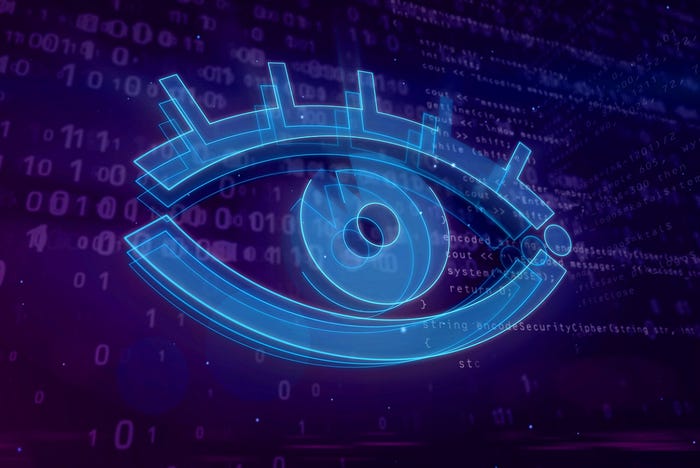A Cybersecurity Framework for Mitigating Risks to Satellite Systems
Cyber threats on satellite technology will persist and evolve. We need a comprehensive cybersecurity framework to protect them from attackers.

Satellite systems play a crucial role in supporting communication, weather monitoring, navigation, Internet access, and more. However, these systems face numerous threats that compromise security and integrity. To address these challenges, we must implement a robust cybersecurity framework to protect satellite operations.
Cyber Threats to Satellites
The threats faced by satellite systems are diverse and range from denial-of-service (DoS) attacks and malware infiltration to unauthorized access and damage from other objects in their orbit that disrupt digital communications.
For satellite systems, these critical threats can corrupt sensor systems, resulting in harmful actions based on incorrect data. For example, a corrupted sensor system could change a satellite's orbit path to collide with another satellite or natural space object. If a sensor system becomes unusable, it could cause failure of other space and terrestrial systems that depend on those sensors. Jamming or sending unauthorized commands for satellite guidance and control could also damage other orbiting space vehicles.
DoS attacks can render satellites unresponsive or, even worse, shut them down. This could create physical safety risks and damage other countries' space vehicles or the ground from satellite debris fallout. Planting malware within the systems through insufficiently secured access points could impact the satellite and spread to other systems the satellite connects with.
Many of the 45,000 satellites have been operating for many years and have little (if any) built-in cybersecurity protection. Consider the Vanguard 1 (1958 Beta 2), a small solar-powered, Earth-orbiting satellite. It was launched by the United States on March 17, 1958, and is the oldest satellite still orbiting Earth.
What would a cybersecurity vulnerability analysis of that satellite reveal today? What if hackers exploit those vulnerabilities? It's possible some already have. Could they obtain sensitive data? Modify the satellite's software code? Change the controls? Perhaps newer satellites have taken hackers' attention away from the Vanguard 1. More likely, there may have been successful hacks not reported to the public.
Looking ahead, artificial intelligence's (AI) rapid adoption across industries means it is essential to validate the accuracy of any AI used within a satellite system and thoroughly test it before putting it into production.
Given the potential threats satellites face, a comprehensive cybersecurity framework is necessary to mitigate these risks. Engineering universities and tech organizations must also collaborate with government agencies and other entities engineering and building satellites to create and implement a comprehensive cybersecurity, privacy, and resilience framework to regulate the industries expanding the use of space vehicles.
A Cybersecurity Framework for Satellite Security
There are five key steps within the NIST Cybersecurity Framework (CSF) necessary to mitigate common risks, including those associated with satellite systems: identify, protect, detect, respond, and recover.
1. Identify
First, identify the satellite data, personnel, devices, systems, and facilities that enable the satellite's uses, goals, and objectives. Document where each satellite is located and all connections between each satellite component and other systems. Knowing what data is involved and how it's encrypted can assist contingency, continuity, and disaster-recovery planning. Finally, understand your risk landscape and any factors that may impact the mission so that you can prepare for and prevent potential incidents. This information will help effectively manage cybersecurity risk to satellite systems and associated components, assets, data, and capabilities.
2. Protect
Using the identified information, choose, develop, and implement the satellite's security ecosystem to most appropriately protect all of its components and associated services. Be aware that legacy space operations and vehicles typically use proprietary software and hardware not designed specifically for a highly interconnected satellite, cyber, and data ecosystem. This means legacy components may lack certain security controls. Therefore, develop, implement, and use verification measures to prevent the loss of assurance or functionality within the physical, logical, and ground segments of satellite systems and enable a response to and recovery from cybersecurity events. Securing physical and logical components, reviewing access controls, and conducting cybersecurity training are vital for protecting satellite systems.
3. Detect
Develop and deploy appropriate activities to monitor satellite systems, connections, and physical components for anomalous events and notify users and applications upon detection. Use monitoring to enable detection and employ a process for handling detected anomalies within space components. Use multiple sensors and sources to correlate events, monitor satellite information systems, and maintain access to ground segment facilities to detect potential breaches in security.
4. Respond
Contain the impact of a cybersecurity attack or irregular incident on a satellite system, ground, or digital ecosystem with appropriate actions. Cybersecurity teams should communicate the event and its impact to key stakeholders. They should also implement processes to respond to and mitigate new, known, and anticipated threats or vulnerabilities and continuously improve these processes based on lessons learned.
5. Recover
Develop and implement appropriate activities to maintain cybersecurity and resilience and restore all capabilities or services impaired due to a cybersecurity event. The goals are promptly recovering satellite systems and associated components to normal operations, returning the organization to its proper working state, and preventing the same type of event from recurring. Coordinate restoration activities with internal and external parties and include corrections for anomalies, calibrations, verification, and validation procedures.
NIST recently released NIST IR 8441: Cybersecurity Framework Profile for Hybrid Satellite Networks (HSN). NIST defines an HSN as: "an aggregation of independently owned and operated terminals, antennas, satellites, payloads, or other components that comprise a satellite system." NIST IR 8441 maps the five CSF categories above into an HSN profile. This provides a valuable resource to engineers and HSN users and provides a great example to cybersecurity practitioners and other satellite network engineers to create cybersecurity profiles for other satellite networks.
As our world continues to rely on satellite technology, cyber threats will persist and evolve. It is crucial to protect these systems by implementing a comprehensive cybersecurity framework describing how to engineer, build, and use them. Such a framework enables organizations to respond effectively to incidents, recover quickly from disruptions, and stay ahead of evolving threats.
About the Author(s)
You May Also Like
Key Findings from the State of AppSec Report 2024
May 7, 2024Is AI Identifying Threats to Your Network?
May 14, 2024Where and Why Threat Intelligence Makes Sense for Your Enterprise Security Strategy
May 15, 2024Safeguarding Political Campaigns: Defending Against Mass Phishing Attacks
May 16, 2024Why Effective Asset Management is Critical to Enterprise Cybersecurity
May 21, 2024
Black Hat USA - August 3-8 - Learn More
August 3, 2024Cybersecurity's Hottest New Technologies: What You Need To Know
March 21, 2024




